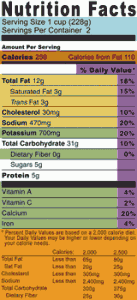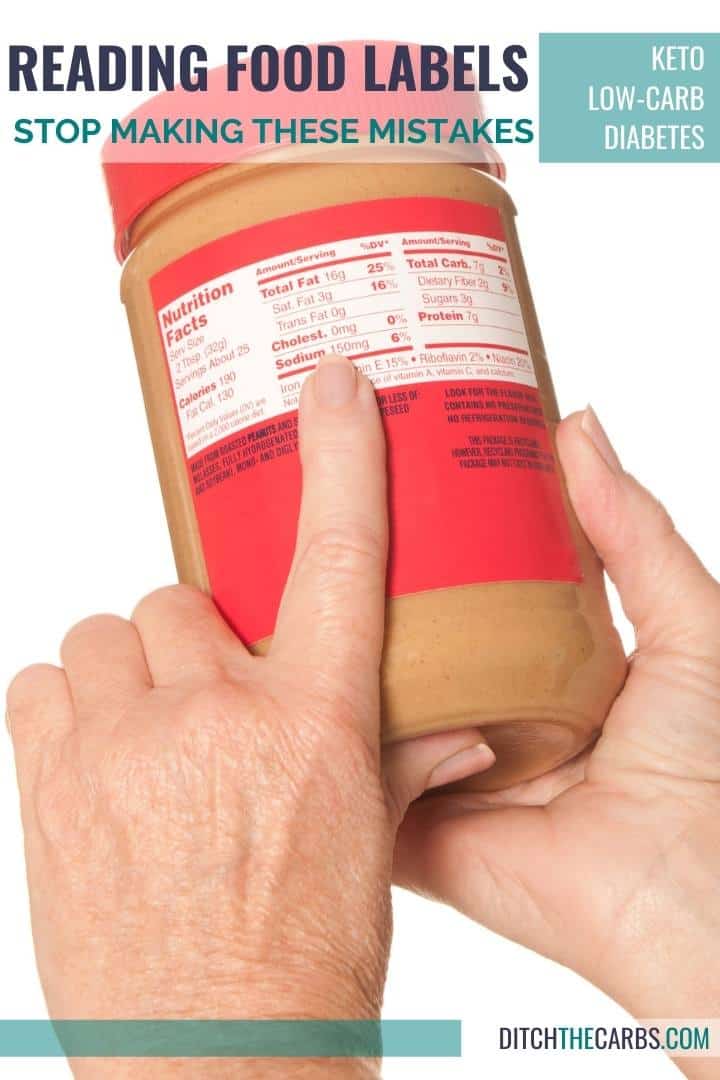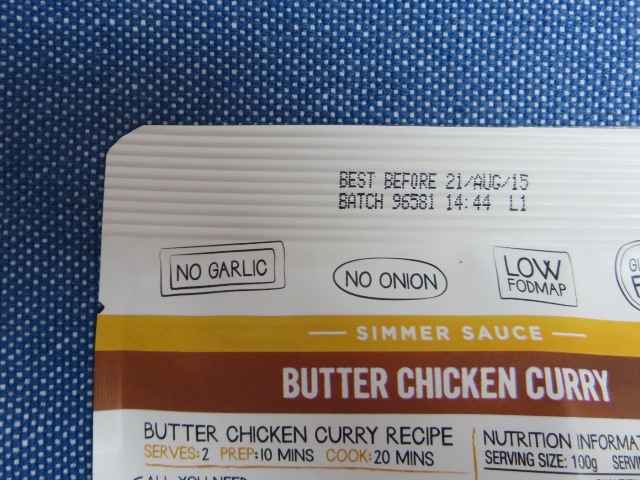40 carbs on food labels
Low Carb Guide to Understanding Nutrition Labels - Virta Health The carbohydrate count is given as total grams, and then broken down into carbs from fiber and sugar. Focus on total carbohydrate. Sugar should be zero as often as possible (1-2g at most). Fiber is a carb and should be included in your total for the day (initially 30g or less). Again, pay attention to the serving size. How to Read Carbohydrates on Food Labels - GlycoLeap When learning how to read carbohydrates on food labels, always remember that 1 serving of carbohydrate is equal to 15 g of carbohydrates. If you want to have a snack, it is recommended to eat no more than 1 to 2 servings of carbohydrates in one sitting. That would be around 15 to 30 g of carbohydrates. Snack = 15 - 30 g of carbohydrate
How to Understand and Use the Nutrition Facts Label | FDA It's important to realize that all the nutrient amounts shown on the label, including the number of calories, refer to the size of the serving. Pay attention to the serving size, especially how ...

Carbs on food labels
Food Labeling & Nutrition | FDA Food labeling is required for most prepared foods, such as breads, cereals, canned and frozen foods, snacks, desserts, drinks, etc. Nutrition labeling for raw produce (fruits and vegetables) and... PDF Read the Food Label for Carbohydrates - NHLBI, NIH Read the Food Label for Carbohydrates Food labels help you choose foods that are lower in calories and in carbohydrates and sweeteners. Here is a food label for a 12-ounce regular soda. The label provides lots of useful information. 1. Serving Size and Number of Servings The serving size is 12 ounces. There's 1 serving in this container. 2. How To Figure Out The Carbs On Nutrition Labels Carbs on a label also refer to fiber and the sugars that are the composition of the food — like the natural sugars that are found in fruits, vegetables, grains, and milk.
Carbs on food labels. How to Calculate Net Carbs - Healthline The USDA Food Composition Databases provides complete nutrition information on thousands of foods, including carbs and fiber. For example, a medium avocado contains 17.1 grams of total carbs, 13.5... Food Labels and Counting Carbs - dummies Total Carbohydrate is listed in grams. Because %Daily Value is written in bold and off to the right side of the label, and lined up neatly with the actual amount, it is easy to allow your eye to zero in on the %Daily Value rather than the actual amount in grams. Reading labels | Diabetes UK Key points Always look at the 'total carbohydrate' on the label when carb counting. This will make sure you are counting both the complex (starchy) and simple (sugary) carbs in your food. Both will raise your blood glucose (blood sugar) levels, and need to be matched with insulin. How To Read Nutrition Labels (Like a Pro) - Ditch The Carbs Firstly you need to understand the difference between total and net carbs. TOTAL CARBS = sugars + starches +fibre NET CARBS = total carbs - fibre Carbohydrates will be on the nutrition label are often broken down into carbohydrates, sugars, starch, and fiber. However, each brand may display its nutritional contents differently.
How to Read a Food Label | Atkins The FDA requires that a nutrition label include the total carbohydrates. The amount of dietary fiber and sugars must also be listed. However, the law does not require that other carbohydrate subcategories appear. Some manufacturers voluntarily include the subcategories of sugar alcohol and "other carbohydrates." Others do not. Reading food labels: Tips if you have diabetes - Mayo Clinic Just as food labels can help you avoid certain foods, food labels can also serve as your guide to free foods. A free food is one with: Fewer than 20 calories a serving Less than 5 grams of carbohydrates a serving Do the math Pay attention to serving sizes. Food Labels: Carbohydrates | Home & Garden Information Center The 2015 Dietary Guidelines for Americans makes the following recommendations about daily consumption of unrefined carbohydrate foods, based on a 2,000-calorie diet: Choose fiber-rich fruits, vegetables, and whole grains often. 6 ounces of grain products, with at least half of this amount being whole grain products 2 ½ cups vegetables How to Read Carbohydrates on Nutrition Labels - Optimal Health The top carbohydrates row is the total amount of carbs present. Made up of all the sugars, dietary fibre and starch, which is the remaining amount after the sugar and fibre. So in the above muesli label we have 51.8g of carbs per 100g. 12.7g is sugar 7.9g is fibre Which means that 31.2g is starch (51.8 - 12.7 - 7.9)
What Is the Difference Between Sugar & Carbs on Food Labels? With 4 calories in 1 gram of carbohydrates, this amounts to 225 to 325 grams of total carbohydrates on a 2,000-calorie-per-day diet. The Code of Federal Regulations for food and drugs requires that food labels list carbohydrates, in grams, as "Total Carbohydrates" or "Total Carbs," typically appearing above "Protein" in a bold font. Food Labels | CDC If you eat the whole thing, you are eating 8 times the amount of calories, carbs, fat, etc., shown on the label. Total Carbohydrate shows you types of carbs in the food, including sugar and fiber. Choose foods with more fiber, vitamins, and minerals. Choose foods with lower calories, saturated fat, sodium, and added sugars. Avoid trans fat. Learning To Read Labels - Diabetes Education Online The serving size listed is 3 pieces (or 90 grams if you are weighing the product). The grams of total carbohydrate per serving is 30 grams. If you eat 6 pieces, that is two servings. You would be getting 60 grams of total carbohydrate (1 serving = 30 grams of total carbohydrate, 2 servings = 60 grams of total carbohydrate). Interactive Nutrition Facts Label - Food and Drug Administration Carbohydrates are found primarily in plant foods; the exception is dairy products, which contain milk sugar (lactose).Total Carbohydrate on the Nutrition Facts label includes: Total sugars include sugars that are naturally present in food and added sugars, which include sugars that are added during the processing of foods (such as sucrose or dextrose), foods packaged as sweeteners (such as ...
How are Carbohydrates & Dietary Fiber Labelled on Foods? Net carbohydrate is the total amount of carbohydrate, minus the amount of dietary fiber found in a food, and is often displayed on the front of food packaging. Essentially, this is a fancy way for food manufactures to market their food as being more superior than their competitors. For example, a protein bar manufacturer may make the claim that ...
World Nutella Day Celebrates The Hazelnut Spread; Plus Nutrition Facts Compared To Peanut Butter ...
Added Sugars on the New Nutrition Facts Label | FDA The new Nutrition Facts label can help you compare and choose foods that are lower in added sugars. Check the label to see if foods are LOW or HIGH in added sugars. 5% DV or less is a LOW source ...
How To Figure Out The Carbs On Nutrition Labels Carbs on a label also refer to fiber and the sugars that are the composition of the food — like the natural sugars that are found in fruits, vegetables, grains, and milk.
PDF Read the Food Label for Carbohydrates - NHLBI, NIH Read the Food Label for Carbohydrates Food labels help you choose foods that are lower in calories and in carbohydrates and sweeteners. Here is a food label for a 12-ounce regular soda. The label provides lots of useful information. 1. Serving Size and Number of Servings The serving size is 12 ounces. There's 1 serving in this container. 2.
Food Labeling & Nutrition | FDA Food labeling is required for most prepared foods, such as breads, cereals, canned and frozen foods, snacks, desserts, drinks, etc. Nutrition labeling for raw produce (fruits and vegetables) and...








Post a Comment for "40 carbs on food labels"